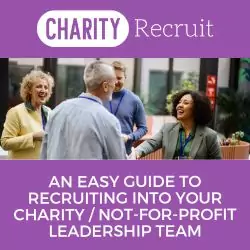How to Use AI to Draft Funding Applications (Without Losing Your Voice)
July 3rd 2025 | Posted by Emily Formby
With inboxes full and funding pots shrinking, it’s no surprise that more and more charity professionals are asking: “Should I use AI to draft funding applications?”
That’s the question we explored in our most recent virtual boardroom session, led by charity CEO, non-exec director and digital strategist Chris Martin – who stepped in at short notice and delivered a session that was as grounded as it was insightful.
Whether you were able to join us live or not, we wanted to share a few key takeaways from the conversation, as well as a link to the full recording below.
AI is already here – and charities are using it
Chris shared recent data showing that over 70% of charities are already using AI tools in some way. From Microsoft Copilot to ChatGPT, there’s growing adoption , often starting with small, practical tasks like meeting transcriptions, email drafting or initial bid writing.
The key message? This isn’t the future, it’s the now.
Strategy and ethics matter more than tech
Rather than racing to adopt new tools, Chris encouraged charity leaders to focus first on why they might use AI. What problem is it solving? How does it support your mission? And who does it help (or risk leaving behind)?
That lens, one of ethics, access and intentional design, is especially important in a sector built on trust.
AI can support your fundraising – but it shouldn’t replace your voice
We explored how AI tools can help overcome the dreaded “blank page” moment, build structure, summarise impact, and even tweak tone. But the message was clear: AI is an assistant, not an author.
Good funding bids still need:
- Real case studies
- Organisational insight
- A tone that reflects your people and your purpose
As Chris put it: “You still need the AI-resistant content, the bits only you can write.”
Funders are expecting this
This part caught attention. Funders, especially major ones like The National Lottery, are not only aware of charities using AI, but are starting to encourage it to help applicants better articulate their work.
That said, they’re also alert to generic, AI-generated content, the kind that looks slick but says very little. Which brings us back to the importance of human oversight, clarity, and tone.
This is just the start
Chris reminded us that AI tools are evolving fast – what feels clunky or unfamiliar today may be commonplace six months from now. But that’s all the more reason to give your teams space to experiment, reflect, and develop confidence.
No one expects perfection – but thoughtful, intentional use of AI could be one of the few tools available right now to ease pressure and free up time in a stretched sector.
📹 Watch the session You can catch up on the full session (48 minutes) 👉 Watch the recording here.
If you’d like to join us for future boardroom events, keep an eye on our events website or follow us on LinkedIn for the latest updates.
And if you’re curious about how AI might work in your charity, from funding bids to service design, you’re not alone. We’re always happy to continue the conversation.
Looking for advice, support or your next leadership role? Contact us today or explore our latest opportunities here: https://charityrecruit.co.uk/jobs/


